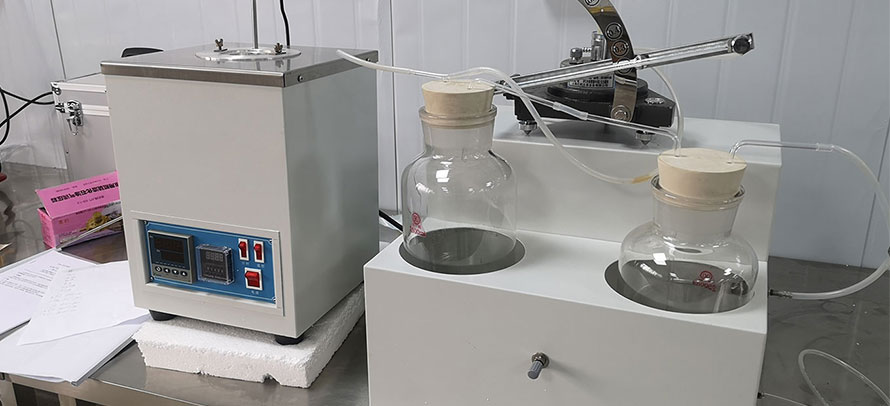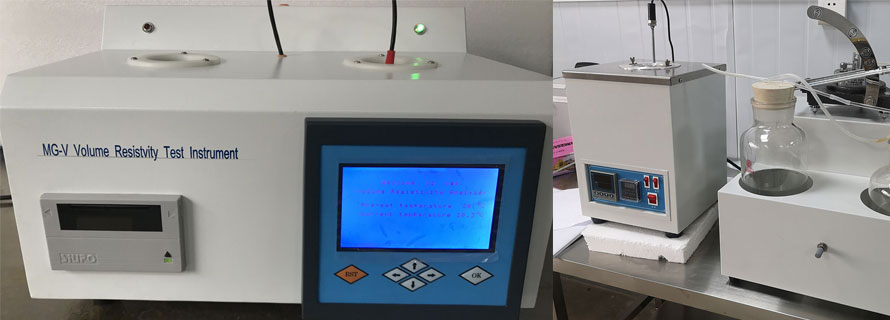ASTM D4865 Generation and Dissipation of Static Electricity in Petroleum Fuel Systems
8. Additives
8.1 Mechanism of Operation:
8.1.1 Conductivity improver additives increase the conductivity of fuels and increase the rate of charge dissipation, that is, decrease the charge relaxation time, resulting in a significant reduction or elimination of electrostatic discharges. The additives are hydrocarbon-soluble polymers, metallic salts, or nonmetallic salts. These additives are designed for use at low concentrations with minimal effects on other fuel properties. One additive, approved for use in aviation fuels, is listed in Specifications D1655, D6615, and D910; this additive is suitable also for many non-aviation fuels, as defined in Specifications D396, D975, D2880, D3699, and other hydrocarbons. Other additives suitable for non-aviation fuels are also available. These additives do not reduce the degree of electrostatic charging and can cause an increase in charging depending on specific conditions. However, a suitable increase in conductivity in virtually all cases results in an increased rate of charge dissipation and thereby a significant reduction or elimination of electrostatic discharges. In the one case mentioned in 6.9, filling an empty filter-separator vessel, residence time is extremely short and is insufficient for charge relaxation; in this particular circumstance, the increase in conductivity conferred by a conductivity improver additive is ineffective in overcoming any increase in charge generation.
8.1.2 Use of conductivity additives has significantly reduced the occurrence of ignitions caused by static in various petroleum handling systems; for example, during switch loading from high or intermediate vapor pressure products to low vapor pressure products (6.1). There are no specific literature references for the extent to which flow rate (7.2.1) and relaxation time (7.3.2) guidelines are affected. When conductivity additives are used to alleviate electrostatic hazards, it is essential that great care is taken to ensure fuels are always treated to obtain an appropriate conductivity. All other practices recommended to reduce electrostatic hazards, such as bonding, must still be followed.
8.2 Method of Measurement:
8.2.1 Refined hydrocarbons have very low conductivity compared to other liquids; for example, jet fuel may have a conductivity 100 million times lower than that of water. Two ASTM test methods are available to measure conductivity. Test Method D2624 covers field test methods and Test Method D4308 describes a high precision laboratory test method. Some of the equipment listed in Test Method D2624 can measure conductivity in situ.
8.2.2 Special sample containers are needed to avoid additive adsorption on container surfaces or desorption of container materials which may affect conductivity. Suitable containers are described in Practice D4306. These effects can be minimized by measuring conductivity directly in the system or promptly after sampling. Conductivity can also be affected by exposure to light and clear containers should be avoided.
8.3 Conductivity Limits:
8.3.1 Conductivity limits for aviation fuels are described in Specifications D1655 (Jet A and Jet A-1 aviation turbine fuels), D6615 (wide cut aviation turbine fuel), and D910 (aviation gasolines) although none of these specifications contain a mandatory minimum requirement for electrical conductivity. When conductivity improver additive is requested by the customer for the purpose of ensuring rapid charge relaxation, the conductivity should be between 50 and 600 pS/m under conditions at the point of delivery meeting Specification D1655 and between 50 and 450 pS/m under conditions at the point of delivery for fuels meeting Specifications D910 and D6615. These limits, and hence conductivity improver additive addition, are mandatory for Jet A-1 supplied in Canada and most other countries outside the United States. Some military aviation fuel specifications require other conductivity limits at the point of use. Canadian civil specifications for Jet A-1 permit a maximum of 600 pS/m. In aviation gasoline specifications, additive use is optional and may be advised for very cold climates where reduced vapor pressure can give a flammable air-vapor mixture in containers or fuel tanks.
8.3.2 The minimum conductivity limits for aviation turbine fuels ensure adequate charge dissipation when filter separators or water-absorbing media monitors are used. The maximum limits prevent adverse effects on aircraft fuel capacitance gages.
8.3.3 Non-aviation fuels or other hydrocarbons are usually treated with additive to give a minimum conductivity of 50 pS/m at point and temperature of use. However, the national standards of Canada for diesel fuels (CAN/CGSB 3.6 and 3.517) incorporate a minimum of 25 pS/m for electrical conductivity at time, place, and temperature of delivery and are the only diesel fuel specifications worldwide to have a minimum conductivity specification requirement. This limit resulted from actual measurements of surface voltage, and so forth, made in fully instrumented trucks being loaded through filters. Effective Nov. 12, 2008, Specification D975 incorporates similar limits under most conditions. Conditions, especially temperature at the point of use and the method of fuel handling and distribution, must be carefully considered before a conductivity limit at the point of additive treatment can be established.
8.3.4 It is important to note that the conductivity of fuels containing additives can fall below 50 pS/m by mixing fuels containing additives with those not containing additives (commingling), or through additive loss in handling. It is therefore essential to monitor conductivity when a question exists of whether additive-containing or commingled fuels are being handled; if the resultant conductivity is less than the specified minimum, the fuel should be handled as if the fuel were unadditized.
8.3.4.1 In aircraft fueling systems, fuels containing conductivity improver additive but with a conductivity less than 50 pS/m should be treated as if the fuel was unadditized. Such fuel is no safer or less unsafe than unadditized fuels (10). (Warning - Residence time in the hose between the fueling facility and the aircraft manifold necessary for relaxation of static charge can become critical if filter separators are replaced by water-absorbing media monitors, although in a well-designed installation, the system should provide a safe situation by maintaining an adequate opportunity for electrostatic charge relaxation. Static discharges may occur in aircraft tanks if residence time is very short (13).)
8.4 Addition of Conductivity Improver Additives:
8.4.1 The most assured means of treatment is to add conductivity improver additive to finished product tankage at the refinery or depot. Conductivity measurement can then be part of a routine quality management system before delivery of the product to various means of transportation, and there is maximum opportunity to find and correct treatment errors.
8.4.2 The addition of conductivity improver additive is best accomplished by continuous injection into the inlet lines to bulk storage tanks. Additive may also be added directly to the tank but mixing is then required to physically distribute the additive throughout the hydrocarbon. Recirculation is satisfactory or mixing can be accomplished by addition of additive to a partly filled tank then completing the fill operation. Mechanical mixing is another method, but housekeeping is critical as tank bottoms may be stirred up. Additive may be added to a standing tank. A sun-heated tank will be mixed in several days by convection currents - in this case, it is important that the additive is diluted with the fuel before addition to assist its dissolution.
8.4.3 Another means of adding the additive is to inject at the loading rack just before flow into truck compartments, while ensuring that the injection system provides reasonably uniform treatment of the flowing product. However, the injection system must be scrupulously monitored to ensure it is operational at all times. This can be accomplished by using in-line conductivity monitors described in Test Method D2624, or other fail-safe techniques.
8.5 Conductivity Changes:
8.5.1 Fuel conductivity can be affected by temperature, handling, other additives, commingling with other fuels, and trace impurities that may not affect other properties. While sometimes unpredictable, these effects can be managed if allowed for during initial conductivity improver treatment.
8.5.2 Fuel temperature affects conductivity because viscosity change affects the rate at which charge can be conducted through fuel. The temperature-conductivity relationship (14) is roughly defined by the following equation:
Log k at t1 = n(t1 - t2) + log k at t2
where:
k = conductivity,
n = temperature/conductivity coefficient determined experimentally for the fuel, °C or °F, and
t1 and t2 = temperatures in the same temperature units.
Further discussion of low temperature effects is in Appendix X2 of Test Method D2624.
8.5.3 Loss of fuel conductivity during distribution and handling may occur due to adsorption of additives by surfaces such as pipelines, clay treaters or filter elements.
8.5.4 The conductivity-improving performance may be strongly affected by other additives and by trace materials in the fuel. These effects can be evaluated by treating representative samples containing other normally used additives. Other additives and trace materials can also cause loss of conductivity during storage in addition to initial effects following treatment. Some effects of other additives are known; others can only be determined by evaluation in the specific fuel.
8.5.5 Having evaluated these effects for the fuel and knowing the probable distribution effects, fuels are normally treated with a margin above the specification minimum. Thus aviation turbine fuels are normally treated to give an initial conductivity of about 150 to 250 pS/m.
8.5.6 A test method is being developed to determine the concentration of some conductivity additives in fuels.
8.6 Effects on Other Properties - Other usually measured properties of non-aviation fuels are not affected by conductivity improver additives at normal use concentrations. For aviation fuels, the water separation properties as measured by Test Method D3948 are affected. The magnitude of the effect depends upon other additives and also trace impurities and is not always predictable. This can be especially troublesome for fuels requiring high concentrations of conductivity improver additives. In cases where conductivity loss is a problem, addition of conductivity improver additive close to the time and place of delivery is frequently practiced.

